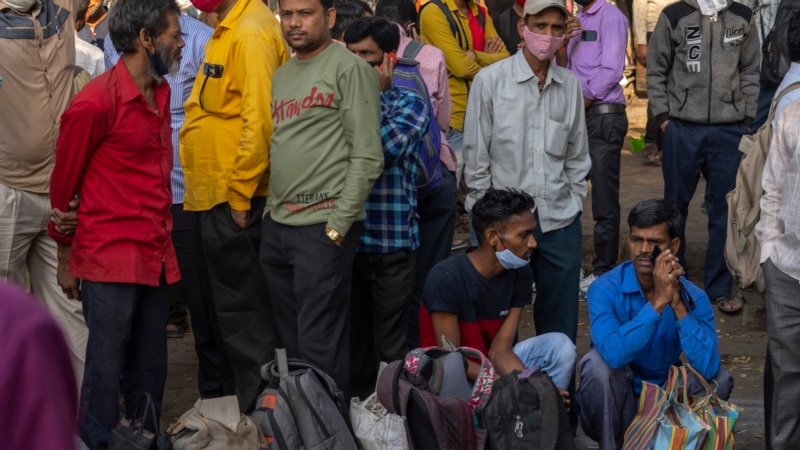
India’s government has pledged to spend billions of dollars on public infrastructure to reboot an economy that is bouncing back from the massive contraction it suffered during the novel coronavirus pandemic. But concerns remain about an uneven pace of growth that has seen big businesses flourish but its vast unorganized sector struggle. Asia’s third largest economy is projected to grow at 8% to 8.5% this year, according to government figures. The strong economic recovery began last year despite a deadly second wave of COVID with growth estimated at 9.2% in the financial year that will end in March. “The economy has shown strong resilience to come out of the effects of the pandemic with high growth,” Finance Minister Nirmala Sitharaman said as she presented the country’s annual budget Tuesday. “However, we need to sustain that level to make up for the setback of 2020-21.” The budget increases spending to $533 billion in the coming year from $477 billion. She announced that the government would spend $2.7 billion to build highways and $6.4 billion on housing for the poor. It will also expand rail networks, ports and airports, manufacture energy efficient trains and extend credit guarantees to small businesses. Sitharaman said climate action is a priority and promised to focus on electric mobility and solar power in a bid to reduce the country’s carbon emissions. “I am conscious of the need to nurture growth through public investment to become stronger and more sustainable,” Sitharaman said. Economists have welcomed the government’s decision to step up spending. “The decision to increase public investment to 2.9% of gross domestic product, is rock solid and good news and should attract private investment into infrastructure,” says Santosh Mehrotra, a human development economist and author of the book “Reviving Jobs: An Agenda for Growth.” According to the finance minister, the new investments would help create six million jobs over the next five years. Mehrotra however points out that this fails to address the scale of the challenge India faces. “The unemployment crisis we face is huge. Five to six million people join the labor force every year. That is on top of the unemployed we already have. That number was 30 million in the year 2019 and it has only grown post the pandemic by another 10 million,” says Mehrotra. “And we also have millions who want to come out of agriculture into non-farming jobs.” The unemployment challenge was underlined last week by violent protests by job seekers that erupted in Bihar and Uttar Pradesh. Several economists point out that while India’s economy has rebounded, growth has not percolated down as its vast informal sector, which provides most livelihoods, continues to reel under the impact of long shutdowns imposed when infections spiraled during the last two years. Tens of thousands of small enterprises have shut down. That has widened income inequalities with an estimated 80% of households losing incomes during the pandemic. But there is optimism as a third wave of the pandemic driven by the omicron variant begins to recede. India’s vaccination program has made significant progress since July last year — 75% of adults are fully inoculated. That is creating confidence in opening most sectors of the economy. “The economy is in a good place to grow strongly into the next year or two,” the finance ministry’s principal economic advisor, Sanjeev Sanyal, said while presenting the country’s economic survey on Monday. India’s economic growth two years into the pandemic is seen as the fastest among major economies in the world. The revival comes after its economy shrank in 2020 by 6.6% — the sharpest dip in 40 years that came after a long and stringent shutdown. India also said the country’s central bank will introduce a “digital rupee” this year using blockchain technology, becoming one of the first major countries to do so and said it will levy a 30% tax on income from virtual digital assets.
Most Read